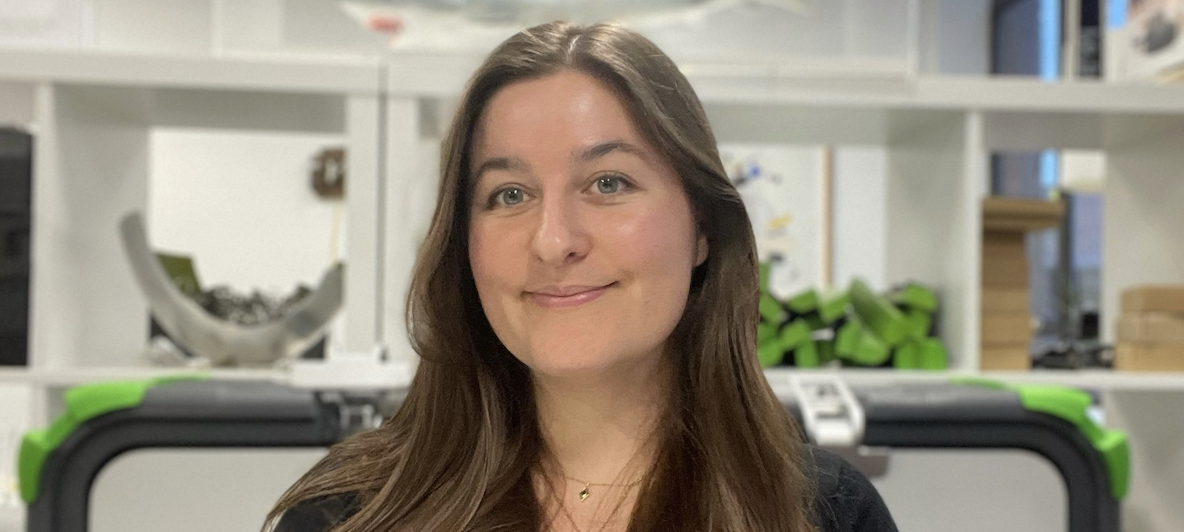Alumna Mithra Stevens is an art historian specialising in sustainable logistics within the fine art sector. We spoke with Mithra about her time at Sotheby's Institute and how art world organisations can address their carbon footprint.
How would you describe your Sotheby’s Institute of Art experience?Studying at Sotheby’s Institute has given me the opportunity to broaden my horizons and introduced me to facets of the art world that I never knew existed. l gained valuable insight into the behind-the-scenes working, functioning, and complexities of the UK art market. This experience further advanced my love of art history with a strong sense for the practicalities and diverse layers of art management, administration, and transportation. The MA program gave me access to knowledge and individuals who have shaped my career trajectory in sustainable art logistics. Having completed my practice-based dissertation on greenhouse gas reporting in the arts sector, I am currently focused on securing funding to develop an application designed to shake up the sustainability responsibilities of the art world.
What drove your decision to apply for a Sotheby’s Institute MA program and what did you study?With a bachelor's in Art History and having previously worked as a gallery coordinator, exhibition assistant, art sales consultant, and picture framer, I knew I was interested in the practical side of the art world. I decided to study MA Art Logistics and I am so grateful I got the opportunity to do so. The skills that I learnt throughout the year and the connections I made in the industry are invaluable.
What does your current role entail?
I am the Account Manager at ROKBOX but since we are a small team I’m also heavily involved in fulfilment, marketing and sales. I first heard of the company at the beginning of my MA and was immediately drawn to the product as a disruptive sustainable solution. Creating a reusable and recyclable alternative crate option that has value in the art world is exciting and challenging. The task of scheduling and provisioning art establishments and private clients with concrete alternatives to regular disposable packaging, and ensuring the security of their packed items through due diligence and high standards of excellence is rewarding. The art world has many established practices so changing behaviours takes courage and foresight.
You recently completed your dissertation on greenhouse gas (GHG) emissions reporting and sustainable logistics within the fine art sector. Could you give a quick summary of your findings?
My dissertation looked at evolving frameworks for climate change control, flowing from government and public sector initiatives into the private sphere. It included a comprehensive analysis of carbon footprint calculators, aiming to help support the triangulation and regulation of GHG emissions reporting and reduction strategies within the global art world. My research highlighted the ever-pressing need to measure emissions, identify carbon intensive areas and plan for reductions. Incentives to create sustainable supply chains are growing and we are seeing major public sector institutions take the first steps towards making significant reductions and pushing for sustainable partnerships within the industry.
What tips would you suggest for art world organisations seeking to address their carbon footprints?
Firstly, it is essential to understand your emissions in order to effectively plan for reductions. Once you have gathered the data it is easier to see the areas that need to be addressed to create an impact. Secondly, start the conversation with your suppliers, if you don’t ask then it is unlikely anything will change. For example, ask your shipper if it can provide a carbon estimate on quotes or how/if it is considering sustainability within its business. The market will follow demand and as I found in my dissertation research, the public sector is being pushed by requirements for government funding and partnerships, and this is likely to filter into the private sector in the coming years.
What advice or tips would you give to applicants?If you are looking to explore the art world and want to understand more about where your specific interests can take you, then apply for the MA. Seize every opportunity to get involved as they present themselves (which they will). I found that writing for the Institute's magazine was a great way for me to connect with incredible artists and creators! If you are prepared to work hard and collaborate with others, you can master many skills and gain unparalleled opportunities in a world of new experiences.
